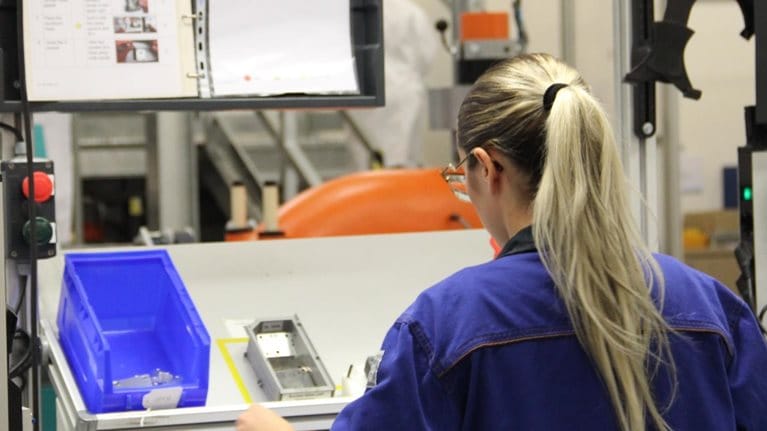That’s the conventional wisdom: improve one part at a time, then move to the next, methodically and consistently. But it’s clear that this traditional view, with stability as the primary value, is increasingly wrong. It misses the intersections between the parts, which are where value tends to be lost. Research by our colleagues (see Kevin Laczkowski, Tao Tan, and Matthias Winter, “The numbers behind successful transformations,” McKinsey Quarterly, October 2019) shows that the most successful performance transformation efforts cut across business units and functions, target both the top and bottom lines, and engage a substantial share of the workforce.
Stay current on your favorite topics
At best, we find, improving the parts improves only those parts, without necessarily reaching the whole. And because the whole doesn’t change, the improvement in the parts themselves isn’t likely to last.
Instead, it’s more accurate to say that improving the parts is much more likely to pay off if you first work to improve the whole, seeing it in its entirety from end to end. Then, the parts and the whole reinforce each other.
This basic rule applies across industries, where businesses of any size naturally divide their operations into areas and functions: procurement, manufacturing, and supply chain for a manufacturer, or client advising, risk-assessment, and fulfillment in a service-sector institution.
Thinking and working in these types of silos isn’t typically a way to extract an organization’s full potential. Our studies have repeatedly confirmed that about two-thirds of transformation efforts fall short of their goals or are ultimately unsustainable. By contrast, organizations that break through silos in an end-to-end operating model operate more effectively. Accordingly, our colleagues have defined transformation with a capital “T” as “an organization-wide program to enhance performance and to boost organizational health.”
To understand why, think about other team-based endeavors. Improving a single athlete’s performance can help improve a basketball team’s record, for instance, but improving all the players while also teaching the group to work better as a team leads to far stronger overall improvement. Or consider an orchestra. A top-flight oboist can’t improve a group’s musical performance nearly as much as a conductor who works with every section in the orchestra, emphasizing the ways their musical parts interact.
Indeed, we find that cross-functional operations transformations typically outperform their single-function counterparts by between 30 and 40 percent. Cross-functional transformations can also reduce enterprise risk, enhance resiliency across the organization—especially helpful during the current period of economic volatility—and help businesses keep pace with lightning-quick changes in the competitive and macroeconomic landscapes.
By considering the ways that product development, procurement, manufacturing, supply chain, capital expenditures, and services intersect, a firm can unlock its full operational potential and build the capabilities and agility it needs to sustain improvements (Exhibit 1).

For example, a chemicals company tended to react to commodity price reductions by restructuring the organization and cutting costs— measures that were traumatic for the organization and proved unsustainable over time. After a cross-operational transformation, the company was able to navigate a commodity price decline of more than 20 percent by maintaining its EBITDA margin at around 40 percent. At the same time it also increased employee involvement, morale, and overall organizational health.
Would you like to learn more about our Operations Practice?
Don’t wait for distress
Why don’t more companies commit to cross-functional transformation? Because transforming even a discrete area is hard, and adding the complexity of examining the whole of a business is harder still. After all, “if it ain’t broke, don’t fix it” is a catchphrase for a reason. It recognizes how difficult change is, and how uncertain the rewards can be if change is pursued only for its own sake.
But too often, it’s easy to believe that something “ain’t broke” when it actually is—or soon will be at today’s pace of change. In a sense, an organization that’s in real distress has a small advantage over better-performing peers. It’s easier to open minds to change once it’s obvious that existing practices aren’t working. But, by then, the business may find itself with only a very narrow set of options (if any) for turning itself around.
The better balance comes from undertaking a broad-based operational transformation while the organization has a lot more opportunity to create and capture value. Moreover, by following a rigorous (yet flexible) approach to quantifying the opportunity, designing a transformation process, and implementing it, the business is much more assured of achieving results that more than justify the effort involved.
The road to a cross-functional operations transformation
The increase in scope and scale that a cross-functional transformation entails means that careful attention to detail is critical at every step. Everything from the diagnostic before the transformation begins through to the future-state design, the leadership model, and the implementation plan will involve greater complexity—which leaders can manage by mastering a few key points along the way.
Cross-ops diagnostics
It starts with two questions: How much potential value lies in a cross-ops transformation? How much change is required to reach that value? To answer them, a company assesses its current operational system and interfaces—processes, digital and analytics, management practices, mindset and behaviors, and capabilities—and estimates the full improvement potential.
A basic-materials company started with a seemingly narrow problem: a need to maximize the way it used its fleet of trucks, which carried raw materials to manufacturing centers. The executive team hoped improvements would save the company $5 million.
But by taking a broader perspective on ways to maximize truck usage, leaders found that every string they pulled and every question they asked connected the trucks to some other part of their operation. Truck use could be better if the company redesigned its internal road system, and shaped and loaded its raw materials more thoughtfully in ways that matched the production process for the products made from different feedstocks. Thinking about trucks led to reconsidering the long-term planning process.
In the end, the executives realized, how they planned their operations was essentially how they planned their business. No part of the company stood by itself. Every function connected to other functions. And that meant the company needed a diagnostic not only of its truck fleet, but of its entire end-to-end process, from understanding its customer needs through to the delivery of finished products. The company wouldn’t be able to solve the immediate problem without addressing the entire chain of value— and by doing so, would highlight much larger opportunities for the business to grow.

The wisdom of transformations: How successful CEOs think about change
Future-state design and road-mapping
With initial questions answered, the company is in a position to decide on the longer-term objectives it must achieve, and how to accomplish them. The vision that top management creates must be especially compelling, providing a roadmap for future operations performance that will motivate the entire organization regardless of function, business unit, role description, or tenure.
Leaders can’t do this by cloistering themselves with spreadsheets, and then issuing a call from on high. What motivates an executive board isn’t likely to be what motivates the middle manager, the specialist expert, or the frontline worker—yet they are the ones whose work determines whether the transformation succeeds. Instead, including representatives from every important stakeholder group in envisioning the company’s future increases the chances that the desired future state will be shared among everyone, and will therefore be sustainable.
For example, the top management of a financial institution made a deliberate effort to adopt ideas and principles they’d seen on visits to other companies that had achieved real operational excellence. They hoped to change their company into what they thought it could become, and to do so they shared their experience across a cross-section of colleagues to identify which messages resonated. The institution served a significant proportion of its home-market’s population, so the idea that operational excellence could bring financial security to more people resonated powerfully. Each group within the company could adapt the message to their day-to-day work and make it meaningful. In this way, the cross-operational program began with full commitment and engagement throughout the institution. People were in it to win not just economic results, but also to improve their customers’ lives. That made the hard work of changing the culture worthwhile.
In similar fashion, the basic-materials company changed its initial plan. Instead of simply maximizing its truck operations, or even maximizing each piece of its overall operations, the firm rethought its value stream: identifying the places where each piece of operations intersected with others, in order to maximize value while minimizing resource use.
Talent-led transformation
Employees then lead the implementation. Management sets the goals and overall direction, but don’t simply hand employees a new way of doing things. Instead, employees help build the new system, and that ownership helps implementation engage initially, then stick for the long term.
The company makes the transformation a top priority and moves key people and resources into positions that support this priority. Senior leaders role-model the change, and influential employees drive it at the grass-roots level. In other words, the company sets a vision, gets behind it in every way, and decides how the firm will implement the changes necessary to realize that vision.
In fact, our experience has found that implementations led by the workforce are five times more sustainable than those led by management. Organizations that embark on successful cross-operational transformations keep this in the front of their corporate minds.
But it means changing mindsets from the top—a challenge in any industry, whether in service sectors such as finance and health care, or heavy industries like oil and gas or metals and mining. Leaders should be deliberate in choosing the people who will drive the transformation and role-model the change, turning the culture toward collaboration and away from top-down orders.
A vice president of a basic-materials company says, “My style as a leader used to be to exercise as much control as I could about what happened in my area. I thought that was how I created value for the organization, so I made a lot of decisions, even small ones. I think I really was a bottleneck. Now I obtain better results if I try to develop people more and ask questions, so that they can make the decisions rather than me.”
Another vice-president says, “We used to say, ‘We work as a team,’ but most of the time it wasn’t much of a team—the supervisor gave an order and the workers followed. Today, it’s more of a conversation; people are more open to hearing each other. Anyone can give a presentation or express an informed opinion. And because of that, people work more as a team to try to solve problems. Many more of our people now see themselves as problem solvers. Before, they would take problems to their supervisors or managers, but now, step by step, they are learning how to refine what we can do as a company.”
Flexible implementation planning
Depending on the business’s starting point, a flexible, scalable implementation plan can take one of several forms, such as a “big bang” for companies with high transformation competency and low complexity, or “wave based” to manage multiple geographies and major capability building (Exhibit 2).

But certain ideas carry across each of these structures, and will sound familiar to leaders who have led change. In addition to focusing on rank-and-file employees, the plan must include a pool of dedicated change agents to train and coach leaders, along with resources for building capabilities, and tools for managing both the change team and the broader implementation. Aligning personnel to support the new capabilities, behaviors, and management practices will require an updated technological architecture and organization, and revamped corporate planning to foster continual operations improvement.
The magic comes from bringing all of these elements together across the entire organization, as at the basic-materials organization when leaders introduced systems that shared information from its supply chain more broadly. By applying advanced analytics, the company optimized the positioning of raw-material processing equipment—a step that brought an additional productivity increase of 20 percent.
Yet none of these changes would have been sustainable if the organization hadn’t created new management practices. These let it guarantee the execution of standard operational procedures, while also transitioning company culture towards that of a continuous improvement organization, constantly looking for ways to improve safety, performance, and quality.
The result: a transformation program with an impact of more than $60 million. The cross-functional operations transformation saved approximately 12 times more than the project the company had initially envisioned. Moreover, by providing customers with a mix of products better suited to their needs, the company has boosted quality and reduced inventory levels.
The cross-functional operational transformation approach covers the whole scope of operational functions and interfaces (see sidebar, “End-to-end operations drive profitable growth in consumer goods”). It simultaneously addresses processes, digital, analytics, management practices, mindsets, behaviors, and capabilities; applies proven approaches and tools for building capability and managing change and implementation; and aligns people, technology, and strategic planning to enable radical change.
The way forward
Using the core principles described above, cross-functional transformations can create lasting, significant impact in around one to two and a half years. But it requires a commitment to seeing operations as a whole, rather than just its functional parts.


